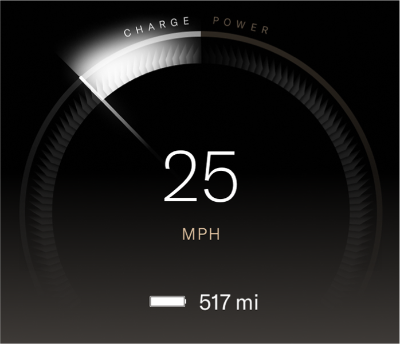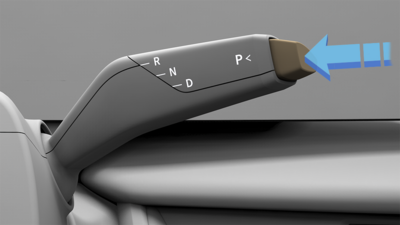Warning: Always maintain an appropriate distance from the vehicle in front because ABS cannot overcome the physical limitations of trying to stop the vehicle a very short distance.
Warning: The braking distance on road
surfaces that are wet, slippery, or loose is always increased (even for vehicles
equipped with ABS).
Warning: Always drive with due care and attention to your surroundings and road conditions. ABS will not correct driver errors.
Your vehicle is equipped with an Anti-lock Braking System (ABS) that helps prevent the wheels from locking during hard braking or braking on roads with reduced grip.
The ABS monitors the speed of each wheel during braking and varies the brake fluid pressure at
each wheel to prevent the wheels from locking.
This system helps maintain steering ability during
maximum brake application.
When ABS activates, you may experience the following:
- Pulsations in the Brake Pedal
- A Slight Drop of the Brake Pedal
- Clicking or Grinding Noises
- ABS Warning Indicator Flickering on and off as the System Activates
These conditions demonstrate that ABS is operating and are not a cause for concern. Therefore, you must maintain a firm and steady pressure on the brake pedal while experiencing the pulsation.
Emergency Braking
Warning: Do not pump the brake pedal
because this interrupts the operation of the ABS system and increases your stopping
distance (which could lead to a collision).
Fully press the brake pedal in an emergency, even when the road surface is slippery.
Secondary Collision Mitigation System
The secondary collision mitigation system, or post-collision braking system, automatically triggers the vehicle brakes if the vehicle detects a crash. The system is designed to activate the electric park brake automatically after the vehicle comes to a standstill.
The driver can override the secondary collision mitigation braking by either fully depressing the accelerator or brake pedal.
ABS Warning Indicator
 The ABS indicator displays with a notification message on the Glass Cockpit. If illuminated, the ABS is disabled. Contact a Lucid Service Center as soon as possible to have the fault repaired.
The ABS indicator displays with a notification message on the Glass Cockpit. If illuminated, the ABS is disabled. Contact a Lucid Service Center as soon as possible to have the fault repaired.
CAUTION: The pedal-operated braking system remains operational even when ABS is disabled. Be aware that braking distances may increase and wheels may lock under heavy braking.
![]() A red brake indicator and a notification
message will display on the Glass Cockpit if the brake fluid level in the
reservoir is low.
A red brake indicator and a notification
message will display on the Glass Cockpit if the brake fluid level in the
reservoir is low.![]() Red Brake Indicator
(Canada Only).
Red Brake Indicator
(Canada Only).![]() A brake system fault has been detected
if the yellow brake indicator displays on the Glass Cockpit. Contact a Lucid
Service Center as soon as possible.
A brake system fault has been detected
if the yellow brake indicator displays on the Glass Cockpit. Contact a Lucid
Service Center as soon as possible.![]() Yellow Brake
Indicator (Canada Only).
Yellow Brake
Indicator (Canada Only).
